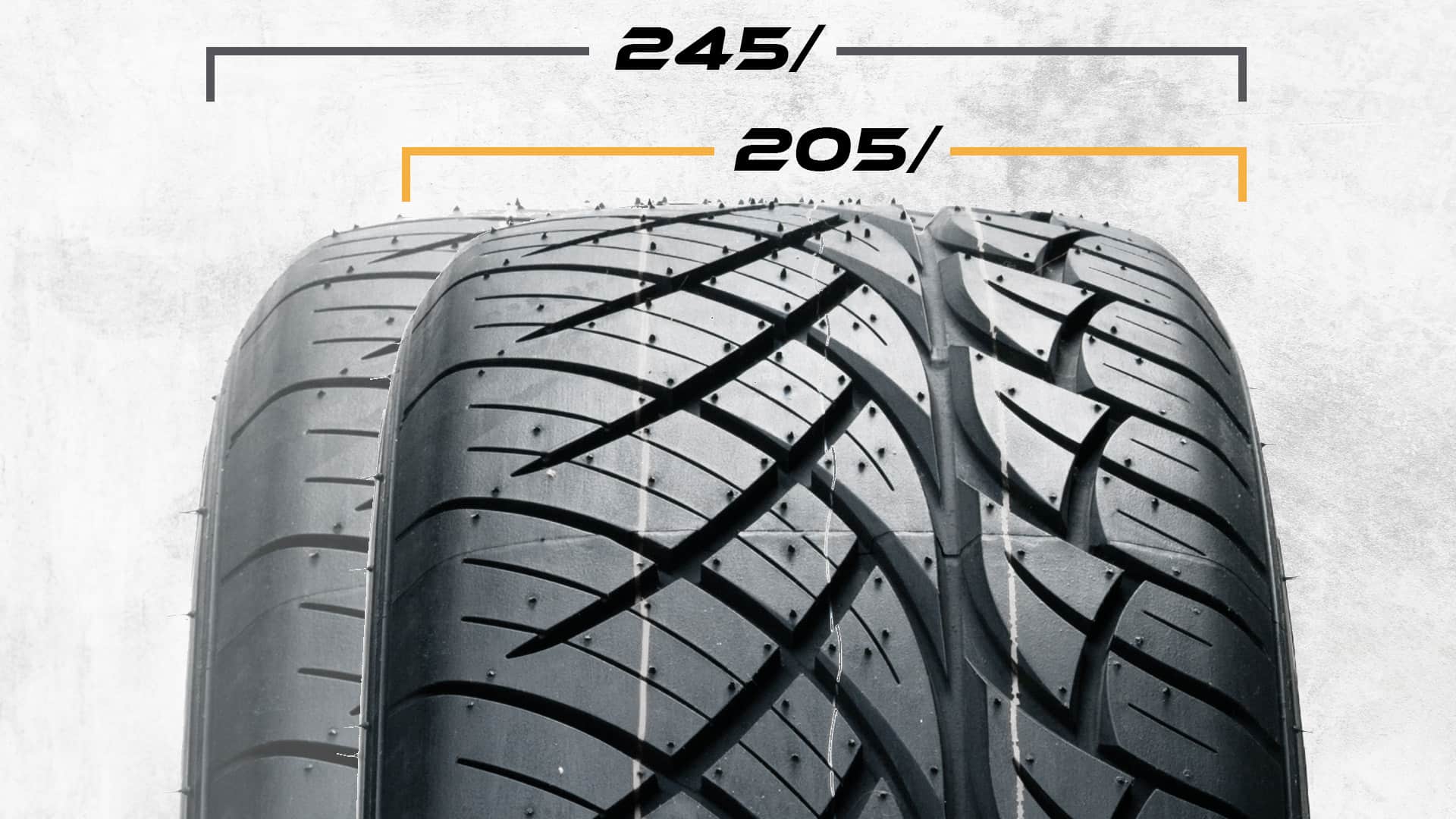Are wider tires better in snow? No, wider tires are not better in snow. They tend to float on the snow, reducing traction, while narrower tires provide better grip by cutting through the snow.
Choosing the right tires for winter driving is one of the most crucial decisions a driver can make to ensure safety and performance in snowy and icy conditions. When it comes to tire width, there’s often debate about
whether wider tires perform better in snow. Some people believe that wider tires provide more traction due to their larger contact patch with the road, while others argue that narrower tires perform better in snowy conditions due to their ability to cut through the snow and maintain better grip.
In this article we will explain the impact of tire width on snow performance. We’ll look at how wider and narrower tires behave in snowy conditions, the science behind tire traction, and the advantages and disadvantages of each.

Contents
Tire Width and Its Impact
Tire width refers to the measurement of the tire’s cross-section, typically denoted in millimeters. The width of a tire can influence various aspects of vehicle performance, including handling, comfort, and traction.
Wider Tires
Wider tires have a larger contact patch, which can offer benefits in certain conditions:
- Dry and Wet Roads: On dry or wet surfaces, a larger contact patch can provide better grip, improving handling and braking performance.
- Aesthetic Appeal: Wider tires are often associated with a sportier appearance, which can be desirable for some vehicle owners.
However, in snowy conditions, the advantages of wider tires may diminish:
- Increased Risk of Hydroplaning: A larger contact patch can lead to a higher risk of hydroplaning on wet or slushy roads.
- Reduced Traction in Deep Snow: Wider tires may struggle to cut through deep snow, leading to reduced traction.
Narrower Tires
Narrower tires have a smaller contact patch, which can offer advantages in snowy conditions:
- Higher Ground Pressure: A smaller contact patch increases the tire’s ground pressure, allowing it to cut through snow more effectively and maintain better traction.
- Improved Performance in Deep Snow: Narrower tires are better suited for deep snow, as they can dig into the surface more easily.
However, narrower tires may have some drawbacks:
- Reduced Grip on Dry Roads: On dry or wet surfaces, a smaller contact patch can result in reduced grip, affecting handling and braking performance.
- Potential for Increased Wear: Narrower tires may wear out more quickly on dry roads due to increased friction.

Real-World Testing: Wider vs. Narrower Tires in Snow
To understand the practical implications of tire width in snowy conditions, let’s look at some real-world tests.
Test 1: Acceleration and Braking
In a controlled test, vehicles equipped with narrower tires (205 mm) demonstrated better acceleration and shorter braking distances on snow-covered roads compared to those with wider tires (255 mm). The narrower tires’ higher ground pressure allowed them to maintain better traction, resulting in improved performance.
Test 2: Handling and Stability
On snow-covered curves, vehicles with narrower tires exhibited more stable handling. The increased ground pressure provided by the narrower tires helped maintain better contact with the road, reducing the likelihood of sliding or skidding.
Test 3: Deep Snow Performance
In deep snow conditions, narrower tires outperformed wider ones. The ability of narrower tires to cut through the snow allowed vehicles to maintain forward momentum, whereas wider tires tended to float on the surface, leading to reduced traction.
Pros and Cons of Wider Tires in Snow
Here are some notable pros and cons of wider tires in snow –
Pros
- Better Grip on Dry Roads: Wider tires can provide improved grip on dry or wet surfaces, enhancing handling and braking performance.
- Aesthetic Appeal: The wider stance of tires can give vehicles a sportier appearance.
Cons
- Increased Risk of Hydroplaning: A larger contact patch can lead to a higher risk of hydroplaning on wet or slushy roads.
- Reduced Traction in Deep Snow: Wider tires may struggle to cut through deep snow, leading to reduced traction.
- Potential for Increased Wear: Wider tires may wear out more quickly on dry roads due to increased friction.
Pros and Cons of Narrower Tires in Snow
Here are some notable pros and cons of narrower tires in snow –
Pros
- Higher Ground Pressure: A smaller contact patch increases the tire’s ground pressure, allowing it to cut through snow more effectively and maintain better traction.
- Improved Performance in Deep Snow: Narrower tires are better suited for deep snow, as they can dig into the surface more easily.
- Reduced Risk of Hydroplaning: The smaller contact patch can reduce the risk of hydroplaning on wet or slushy roads.
Cons
- Reduced Grip on Dry Roads: On dry or wet surfaces, a smaller contact patch can result in reduced grip, affecting handling and braking performance.
- Aesthetic Considerations: Narrower tires may not provide the desired sporty appearance for some vehicle owners.
Related Article
Can You Drive Snow Tires All Year?
Are Off Road Tires Good for Snow?
Frequently Asked Questions
Here are some FAQs about wider tires in snow –
1. Are wider tires better for snow?
No, narrower tires are generally better for snow as they provide higher ground pressure, allowing them to cut through snow more effectively.
2. Do wider tires offer better traction in snow?
No, wider tires may struggle to cut through deep snow, leading to reduced traction compared to narrower tires.
3. Can narrower tires improve snow performance?
Yes, narrower tires can improve snow performance by providing better traction and stability on snow-covered roads.
4. Are there any benefits to using wider tires in snow?
Wider tires may offer better grip on dry or wet surfaces but are less effective in snowy conditions.
5. Should I switch to narrower tires for winter driving?
Yes, switching to narrower tires for winter driving can enhance safety and performance in snowy conditions.
Conclusion
In snowy conditions, narrower tires generally offer better performance due to their higher ground pressure and ability to cut through deep snow. While wider tires may provide advantages on dry or wet roads, their performance in snow is often compromised. Therefore, for optimal safety and performance in snowy conditions, narrower tires are typically the better choice.